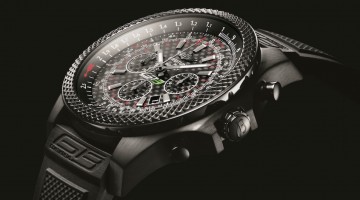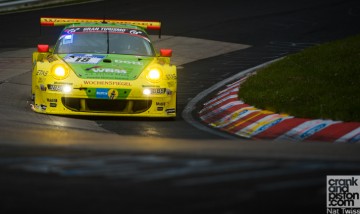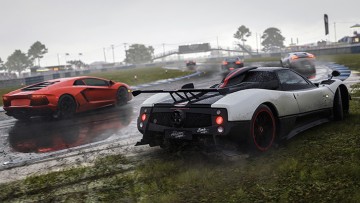crankandpiston.com – and longtime contributor Tim Brown – takes a closer look at the Japanese car scene with the Idler’s Club at Tsukuba Circuit. Turns out there’s nothing quite like it…
[Not a valid template]If there’s one thing you can always rely on the Japanese for, it’s their fearless, confident attitude towards style. The days of simply copying and improving are long gone, and whilst the fashion scene is heavily influenced by foreign brands, these styles – mainly American and European – are moulded into something different, combined with home-grown trends to create a unique look that is usually far more successful than you’d expect.
But this is Crank & Piston, not Needle & Thread, so what’s my point? Well, it seems our friends in the East take a similar approach to cars, and just as varied as the Tokyo fashion scene is the Idlers Club, a loose collective of petrolheads and car lovers from a wide spectrum of car cultures.
This particular event is called the ‘Idlers Games Sprint’, which despite the name is actually full-on circuit racing rather than time-trials, and was held at Tsukuba Circuit. Tsukuba is the closest ‘large’ track to Tokyo. It will be familiar to many virtual racers as a cornerstone of the Gran Turismo track line-up (and also home of ‘Best Motoring’ magazines epic ‘Tsukuba Battles’). So as the day drew closer, and the rainy season looked like it might let up for the weekend, I was getting more and more excited to visit this track for the first time.

On arrival I was overwhelmed by a visual cacophony of wild colours and shapes – all very ‘Nihonteki’, or ‘in the spirit of Japan’. Take RAUH-Welt Begriff for example: where else would you find a cult following of highly modified Porsche 911s in lurid colours? Very few people in the West would dare to ‘improve’ the styling of Stuttgart’s most iconic form, or would at least attempt to keep modifications in period, which is why the super-wide-body, huge double-stacked spoilers and extreme stancing are so striking (not to mention the diamante encrusted ‘Carrera RS’ badge adorning the rump of one of Nagai-sans works).
It’s not just RWB’s offerings that riff on the classics though. Many entrants in the TK/M class were visibly tuned beyond their original factory specs, like the ’67 Honda S800 rocking a carbon-fibre hood and hardtop, or the Lotus Cortina on contemporary rims and Advan cut-slicks. In the same race, representing US Muscle was a pair of Camaros – a ’69 and a ’72 – which also played a similar trick; the ’69 on multi-spoke split rims and the ’72 wearing RS-Watanabes (although both were shod with more traditional Hoosier rubber).
The event itself was unusually broad, with the aforementioned RWBs and historic models sharing the paddock with a handful of Kei cars, a hoard of ‘hachi-roku’s (Toyota 86s), Nissan Zs and an open wheel class, made up of single seaters (including a rather lovely 1970 March 702 F2 car) and a pair of Caterham 7s, which surprisingly managed to hold their own against the winged formula cars. For the first time there was a drift class in the event, widening the appeal even more. Instead of the usual single or tandem ‘linked section’ drifts, all the cars were out on track at the same time doing full laps which was an awesome sight to behold!

The only thing hotter than the drifters’ rapidly vaporising tyres was the intense sunshine, which was a very welcome change from the weeks of non-stop rain leading up to event. This also made life a little challenging for the mechanics (in the uncovered paddock), spectators and drivers to stay cool, and improvised solutions were abundant: umbrellas, towels and even RWB wings were utilised for shade, plus flexible tubing taped into place over side windows to direct airflow to the drivers themselves. But of course, being Japan, you are never far from a well-stocked vending machine to get your ice-cold beverage!
The most pleasurable aspect of the day was the amiable atmosphere though. Few people shied away from the lens, with most entrants happy to give a thumbs up or the ‘peace V’ for the camera and have a chat about their cars. The marshals and officials were also very friendly and happy to offer up their opinions and useful tips for the event. Even the podium ceremonies, which can be quite serious and staid affairs, were low key and full of laughter.

On-track, the highlights were the huge grid of tuned 911s and the tiny Japanese classic and Kei cars. The 500cc twin-cylinder Honda N360 and Zs were particularly cute, as was the Autozam AZ-1 and a trio of S800s. In fact, the diminutive N360 had one of the loudest exhaust notes there! It was also cool to see a 1972 ‘Hakosuka’ Skyline racing in the flesh for the first time, battling for some time with the ’69 Camaro.
It seems that in the same way that ‘anything goes’ on the catwalk of the Japanese high-street (provided it’s executed with appropriate panache of course!), there seems to be a mutual respect and acceptance of all genres and philosophies among car-lovers. It’s this freethinking and rejection of expected conventions that makes the Japanese car scene such a genuine and enjoyable place to be, whatever kind of cars you’re into.
– FULL GALLERY OF SHOTS AVAILABLE HERE – CLICK – Shots courtesy of Motion-Captured



